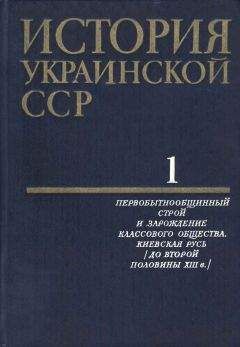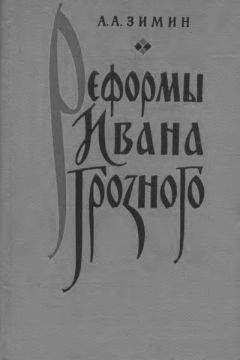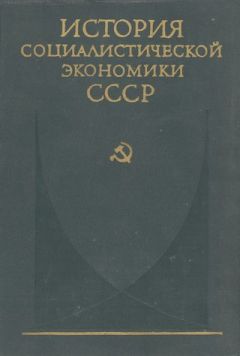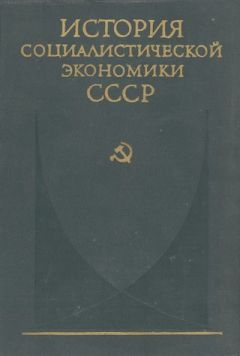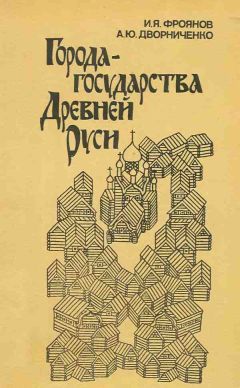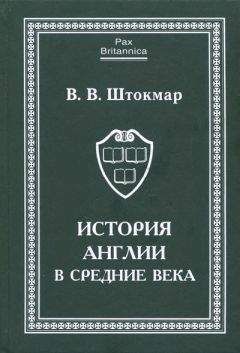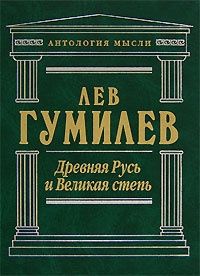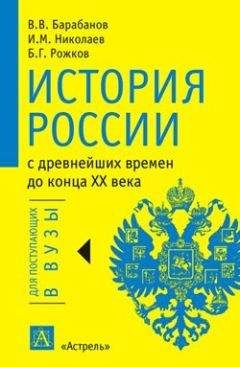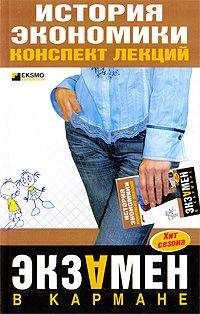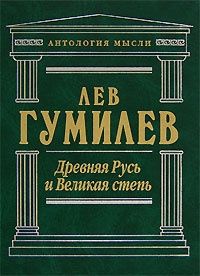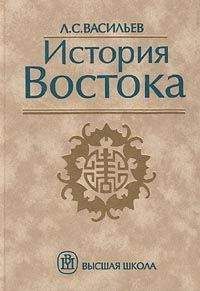Светлана Плетнева - КОЧЕВНИКИ СРЕДНЕВЕКОВЬЯ поиски исторических закономерностей

Скачивание начинается... Если скачивание не началось автоматически, пожалуйста нажмите на эту ссылку.
Жалоба
Напишите нам, и мы в срочном порядке примем меры.
Описание книги "КОЧЕВНИКИ СРЕДНЕВЕКОВЬЯ поиски исторических закономерностей"
Описание и краткое содержание "КОЧЕВНИКИ СРЕДНЕВЕКОВЬЯ поиски исторических закономерностей" читать бесплатно онлайн.
Книга посвящена выявлению и исследованию закономерностей социально-экономических отношений кочевников. Одновременно рассматриваются вопросы взаимоотношений земледельцев и кочевников, возникновения кочевнических культур. Изучение и систематизация закономерностей позволили построить ряд социально-этнокультурных моделей, существовавших в степях на разных ступенях развития.
The second stage of nomadism is the most typical of cattle-breeding economy.
Primary forms of the settled way of life emerged as a result of limited pasture areas, which necessitated permanent seasonal camps. The population left behind in the winter camps during wars turned to agriculture, planting melons, cereals, even starting orchards. They acquired agricultural implements from their settled neighbours, at first by simply taking them away during raids, then changing them for products of their labour. Finally they started making similar implements themselves, evidence of an advanced stage of social and economic development.
With the appearance of permanent settlements, the rich began to isolate their homes with walls and moats. They stationed their ails on naturally fortified terrain, such as river banks or hills, turning them into a kind of steppe castle. These were winter residencies; in summe their owners roamed the steppe. With time settlements arose around the castles, steppe towns that were to become administrative, handicrafts and trading centres. Naturally, not every castle developed into a town; much depended on its geographic location (at a crossroads, on the seashore) and on the political influence of the owner, his ability to protect the neighbouring steppe population.
Agriculture and a settled way of life brought with them crafts and, hence a new material culture which, while remaining syncretic, already had its own identity. The new, unified culture, internal trade and the rudiments of government stimulated the dissemination and consolidation of a common spoken language, and the development also of a written language on an original or a borrowed basis. These were all signposts on the road to statehood.
In the early state, the aristocratic element became the feudal nobility. In keeping with an ancient nomad custom the head of state was elected at assemblies of the nobility, but candidates were chosen from the ruling clan, usually a relative (brother, son) of the desceased ruler: state power had acquired a heritary character. Next came the bureaucratic machinery (judges, tax collectors, police) and, more important, a regular army (supplemented by detachments the feudal lords were under obligation to provide in times of war). And the nature of wars had changed: they were no longer invasions or raids, but pursued political aims. Conquered regions were not plundered, heavy indemnities were imposed and they were incorporated in the state. Political alliances with neighbouring states and joint wars againts common enemies (armies of semi-nomad states were no longer mercenaries but allies) helped to strengthen a country's international status.
More or less organised states of the third stage of nomadism are known from written sources as kaganats and their rulers as kagans. Ethnic consolidation processes which had began at the second stage became more pronounced at the third. For in well-organised kaganats conditions favoured the gradual formation of a people out of different ethnic groups. Not infrequently the ruling clan, though not ethnic majority of the kaganat, gave its name to the state and the maturing ethnic communities; in other cases the ethnonym was derived from the name of the biggest ethnic group.
A unified ideology in the form of a state religion shared by all the population of the state played a major role, together with the material culture, in the state and, hence, in ethnic consolidation. Centralisation in the religious sphere took a form of the Tenghri-Khan (God of Heaven) cult, which for some time coexisted with the leader cult, the cult of famous ancestors or of legendary heroes inherited from the second stage. A new social group, the priests, arose in all class states, and the world regions (Islam, Christianity and others) with their dominating image of a single God, gained ground in all communities.
Though the kaganats were the subject of many works by Mediaeval authors, and historical documents in their languages are not infrequently met with, the main source for the study of their culture and history are archaeological monuments. And these are not only the rare remains of first and second stage winter camps and burial grounds spread over the endless steppe, but also a wide variety of monuments presenting a broad picture of the economic and cultural life. First of all, there are the remains of large settlements, their cultural layers abounding in pottery sherds and bones, remnants of dwellings and their auxiliary biuldings. Most of these communities were in areas suitable for crop farming and gardening. They formed groups with common centres, a castle or a town surrounded by a network of irrigation canals. These are described in ancient sources as typical of many arid steppe regions.
Social, political and ethnic processes characteristic of the emergence and consolidation of the steppe states are strikingly uniform despite chronological and regional differences. The same may be said of the decay and disintegration processes, the causes of which can be classified into four groups.
The first group — external political causes, i. е., defeat in a war with a more powerful neighbour with resultant economic devastation — ruined crops, stolen herds, burned settlements.
The second group — internal political causes, i. е., internal strife expanding with the growth of the state as the feudal lords seek independence of the central power, which inevitably leads first to disorganisation and then to utter collapse. The feudal and clan nobility, the bulk of the military forces, perished in the ceaseless feuds. Some of these grew into economically ruinous civil wars in which the feudal lords were joined by common people.
The third group — natural climate causes, i. е., unpredictable climatic changes which brought prolonged droughts or very cold winters both of which destroyed cros and cattle, with all the other misfortunes this entailed.
The fourth group had, at first glance, nothing in common with the first three. Economic affluence led to a population explosion)) forcing part of the people to migrate to other areas. This, too, was a cause of disintegration of the state.
The crisis precipitated by the interplay of these causes and imperceptibly prepared by the all previous development, would bring on the collapse and disappearance of. even the mightiest empires. The concrete variant of the process depended on the prevalence of one or another cause.
The first variant. Economic ruin following an invasion forces the most active part of the population led by bold and adventurous leaders, launch out on the conquest of new lands. Those who stayed behind often formed the ethnic core of the state of the conquerors. The ethnonym of the defeated thus belonged to those who had left and in due time a new state conglomeration would be formed bearing this name. Thus the ethnic community continued to figure in political life und in the annals of history.
The second variant. Most of the population had perished in the war and there could be no question of starting a crusade to seize new lands, the remaining population simply submitted to the occupants. Only an insignificant part, unwilling to live under enemy rule, sought asylum in neighbouring or even far-away states. The bulk of the population, deprived of best lands, political influence and its ethnonym, coexisted with the conquerors, undergoing a process of mutual assimilation.
The third variant. The vanquished state was incorporated into the victor state, the population being made*to pay more or less heavy indemnities. The defeated state or state conglomeration lost its independence, but the surviving population, completely demoralised by the loss of the army (the young and active generation) and by the igno-minous defeat, made the best of life under enemy rule. This was less painful when the defeated and the victors differed but little ethnically, and the population retained its culture and preserved its ethnic identity. This was, a factor in its subsequent development into peoples holding a definite place in history.
The fourth variant. Due to internal strife and internecine wars huge empires disintegrated into smaller states usually headed by members of the ruling clan of the parental empire. Such states were characterised by intensive cultural and ethnic-formation processes.
The purpose of this classification of the developmental processes typical of the Mediaeval steppe conglomerations is to reveal common regularities. All economic, social, ethnic and cultural phenomena in the nomad conglomerations may be presented as a solid chain — a socio-economic model of various phenomena or specific features. As it is practically impossible to form a complete picture of any steppe ethnic or state formation from historical sources, such socio-economic models help to produce a more or less true reconstruction of the life of dozens of steppe societies formerly unknown to historians.
It is quite possible that these regularities were typical not only of Mediaeval, but also of earlier and later nomad communities spanning the period from their appearance in the steppe up to the 20th century.
Список ИСПОЛЬЗОВАННОЙ ЛИТЕРАТУРЫ
Маркс К. Капитал.—Маркс К., Энгельс Ф. Соч., т. 3.
Энгельс Ф. Анти-Дюринг,—Маркс К., Энгельс Ф. Соч., т. 20.
Энгельс Ф. Происхождение семьи, частной собственности и государства.— Маркс К., Энгельс Ф. Соч., т. 21.
Маркс К. Хронологические выписки.— Архив Маркса и Энгельса, т. V.
Ленин В. И. Развитие капитализма в России.— Поли. собр. соч., т. 3.
Ленин В. И. О государстве.— Поли. собр. соч., т. 39.
Абаев В. И. Осетинский язык и фольклор. М., 1949, т. 1.
Абрамзон С. М. Формы родоплеменной организации у кочевников Средней Азии.— ТИЭ. Нов. сер., 1951, т. XIX.
Абрамзон С. М. Некоторые вопросы социального строя кочевых обществ.— СЭ, 1970, № 6.
Аверкиева Ю. П. Индейское кочевое общество XVIII—XIX вв. М., 1970.
Агаджанов С. Г. Очерки истории огузов и туркмен Средней Азии IX—XIII вв. Ашхабад, 1969.
Агаджанов С. Г. Сельджукиды и Туркмения в XI—XII вв. Ашхабад, 1973.
Акишев К. А. Зимовки-поселепия и жилища древних усуней.— Изв. АН КазССР. Сер. обществ, наук, 1969, № 1.
Акишев К. А. О возникновении оседлости и земледелия у древних усуней Семиречья.— В кн.: По следам древних культур Казахстана. Алма-Ата, 1970.
Амброз А. К. Проблемы рапнесредневековой хронологии Восточной Европы — СА, 1971, № 2, 3.
Амброз А. К. Степные древности Восточной Европы и Средней Азии V—VIII вв.— Археология СССР. Степи Евразии в эпоху средневековья. М., 1981.
Аммиак Марцеллин. История. Пер. с латинского Ю. Кулаковского. Киев, 1908, вып. III.
Андрианов В. В., Чебоксаров Н. Н. Хозяйственно-культурные типы и проблемы их картографирования.— СЭ, 1972, № 2.
Анна Комнина. Алексиада. М., 1965.
Аристов Н. А. Заметки об этническом составе тюркских племен и народностей и сведения об их численности.— Живая старина. СПб., 1896, вып. Ill, IV.
Артамонов М. И. Общественный строй у скифов.— ВЛУ, 1947, № 9. Артамонов М. И. Надписи на баклажках Новочеркасского музея
и на камнях Маяцкого городища.— СА, 1954, XIX. Артамонов М. И. Саркел-Белая Вежа.— МИА, 1958, № 62. Артамонов М. И. История хазар. Л., 1962.
Арсланова Ф. X. Памятники Павлодарского Прииртышья (VII— XII вв.).— В кн.: Новое в археологии Казахстана. Алма-Ата, 1968.
Арсланова Ф. X. Погребения тюркского времени в Восточном Казахстане.— В кн.: Культура древних скотоводов и земледельцев Казахстана. Алма-Ата, 1969.
Арсланова Ф. X., Кляшторный С. Г. Руническая надпись на зеркале из верхнего Прииртышья.— Тюркологический сборник 1972 года. М., 1973.
Археология СССР. Степи Евразии в эпоху средневековья. М., 1981.
Арциховский А. В. Курганы вятичей.— РАНИОН. М., 1930.
Ахмедов Б. А. Государство кочевых узбеков. М., 1965.
Бартольд В. В. Отчет о поездке в Среднюю Азию с научной целью. 1893—1894 гг.— ЗИАН СИФ. Сер. VIII. СПб., 1897, т. 1, № 4.
Бартольд В. В. Кыпчаки.— Соч. М., 1968, т. V.
Бартольд В. В. Новый труд о половцах: W. Bang, I. Marquart. Ost-
turkische Dialektstudien. Berlin, 1914.—Соч. M., 1968, т. V. Баскаков H. А. Тюркские языки. М., 1960.
Батраков В. С. Особенности феодализма у кочевых пародов.— В кн.: Научная сессия АН УзССР 9—14 июля 1947 г. Ташкент, 1947.
Бернштам А. Н. Проблемы распада родовых отношений у кочевников Азии,— СЭ, 1934, № 6.
Бернштам А. Н. К вопросу о возникновении классов и государства у тюрок VI—VIII вв. н. э.— В кн.: Сборник статей к 50-летию книги Энгельса «Происхождение семьи, частной собственности и государства». М.; Л., 1936.
Бернштам А. Н. Социально-экономический строй орхоно-енисейс-ких тюрок. Л., 1946.
Бернштам А. Н. Очерк истории гуннов. Л., 1951.
Бичурин Н. Я. Собрание сведений о народах, обитавших в Средней Азии в древние времена. М.; Л., 1950, т. I, II.
Бичурин Н. Я. Собрание сведений о народах, обитавших в Средпей Азии в древние времена. М.; Л., 1953, т. III.
Подписывайтесь на наши страницы в социальных сетях.
Будьте в курсе последних книжных новинок, комментируйте, обсуждайте. Мы ждём Вас!
Похожие книги на "КОЧЕВНИКИ СРЕДНЕВЕКОВЬЯ поиски исторических закономерностей"
Книги похожие на "КОЧЕВНИКИ СРЕДНЕВЕКОВЬЯ поиски исторических закономерностей" читать онлайн или скачать бесплатно полные версии.
Мы рекомендуем Вам зарегистрироваться либо войти на сайт под своим именем.
Отзывы о "Светлана Плетнева - КОЧЕВНИКИ СРЕДНЕВЕКОВЬЯ поиски исторических закономерностей"
Отзывы читателей о книге "КОЧЕВНИКИ СРЕДНЕВЕКОВЬЯ поиски исторических закономерностей", комментарии и мнения людей о произведении.





